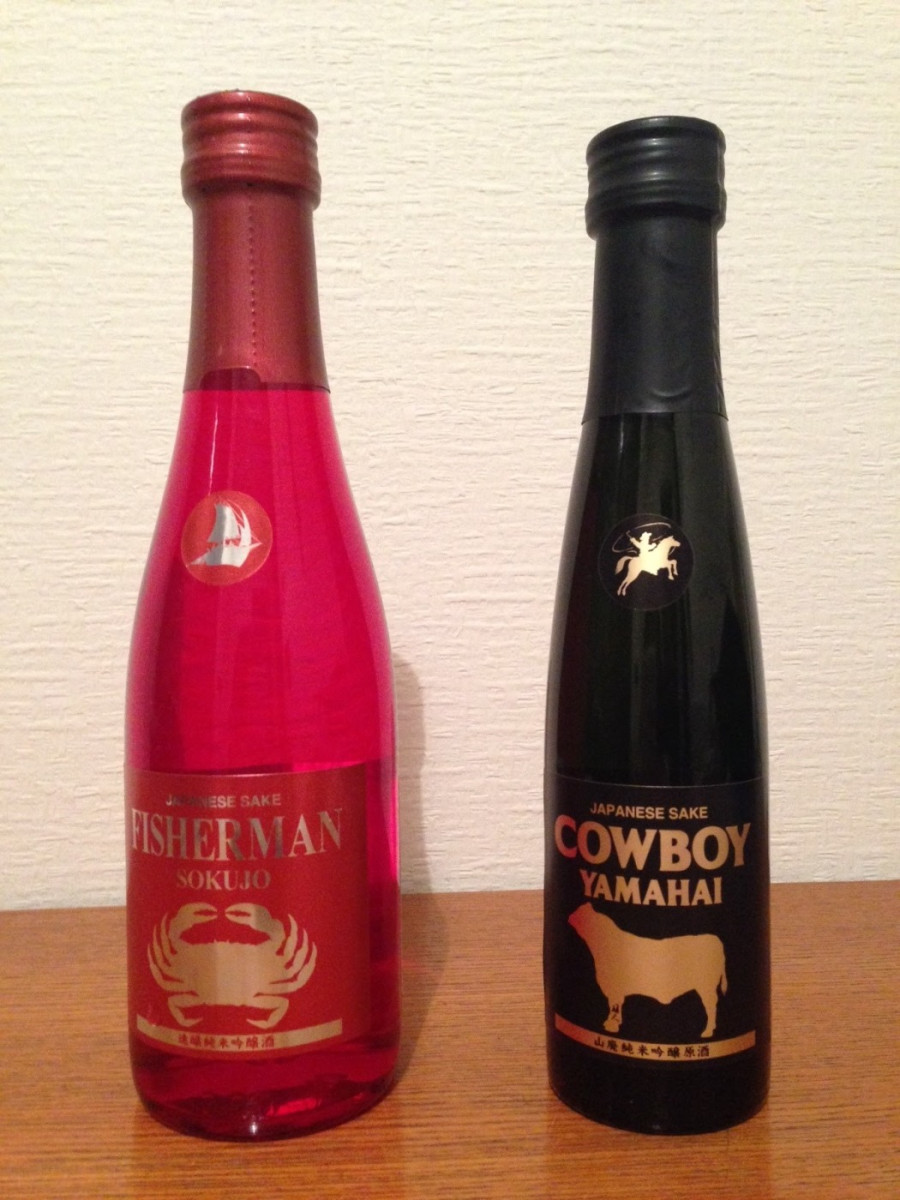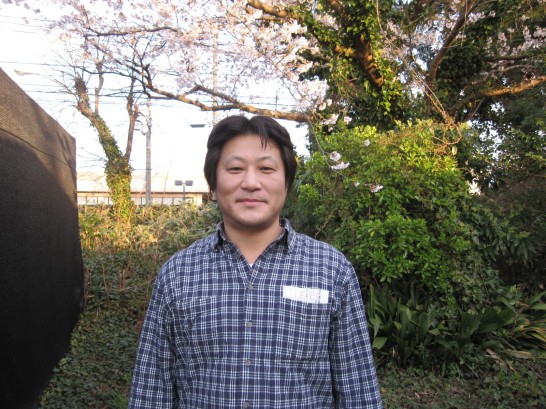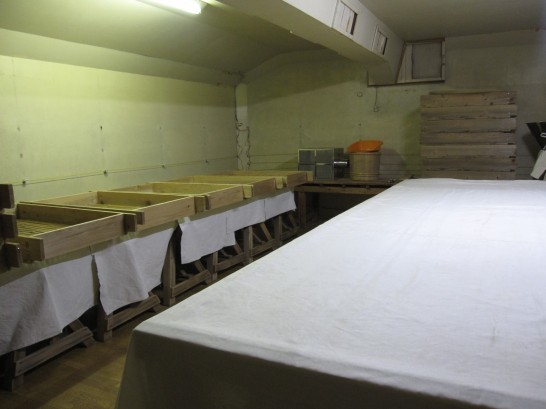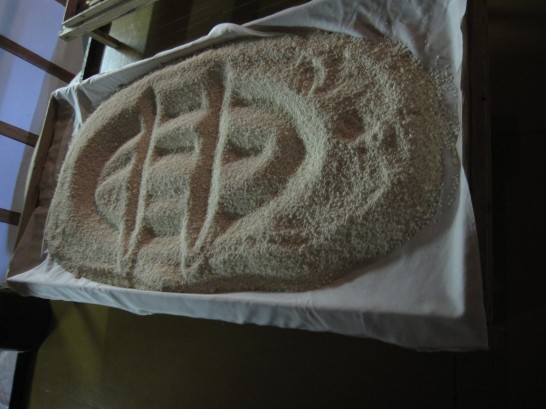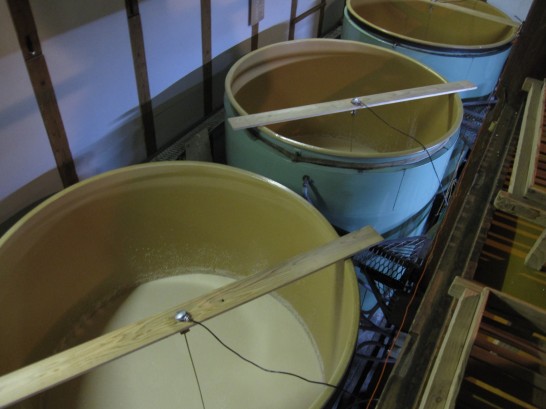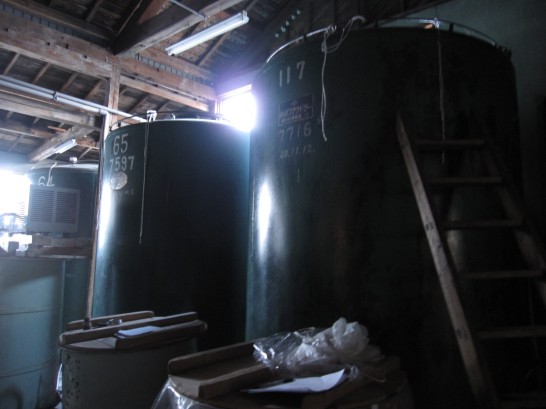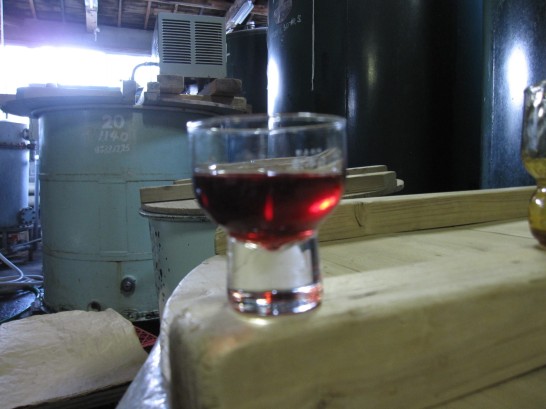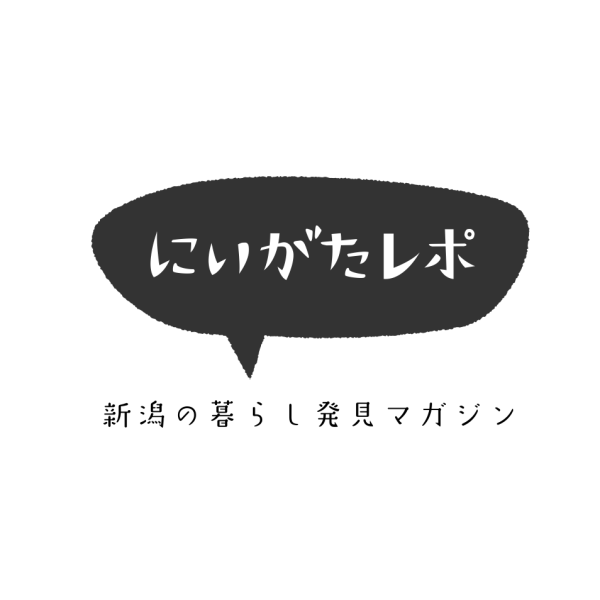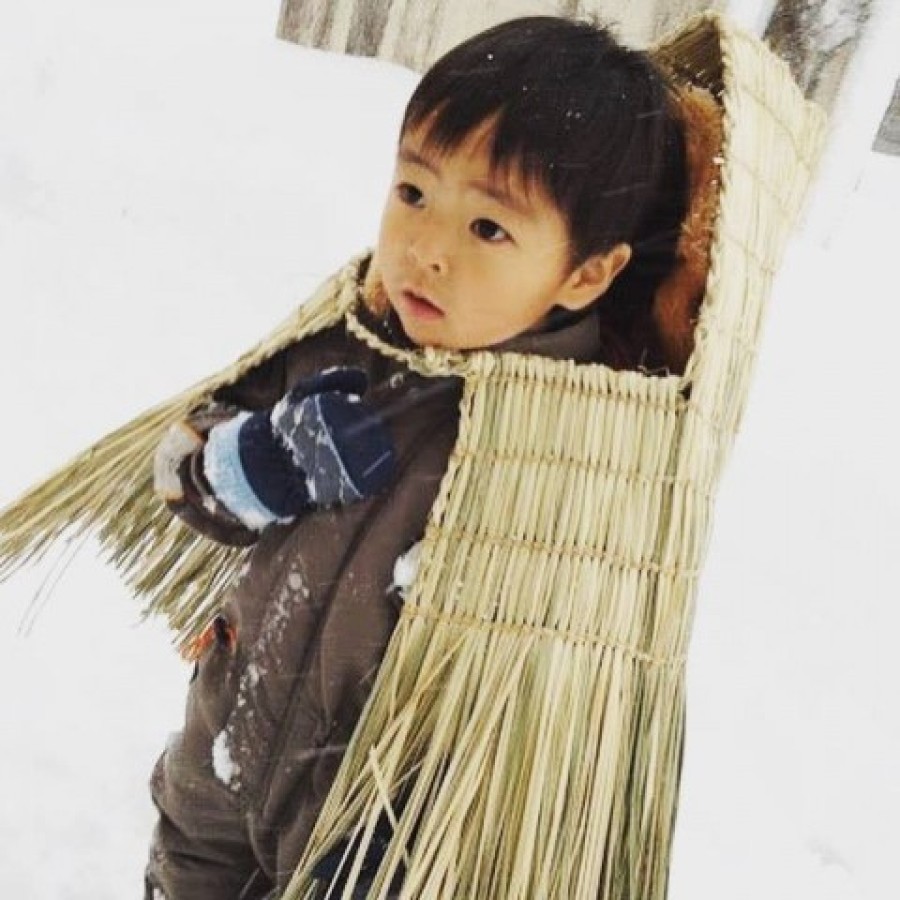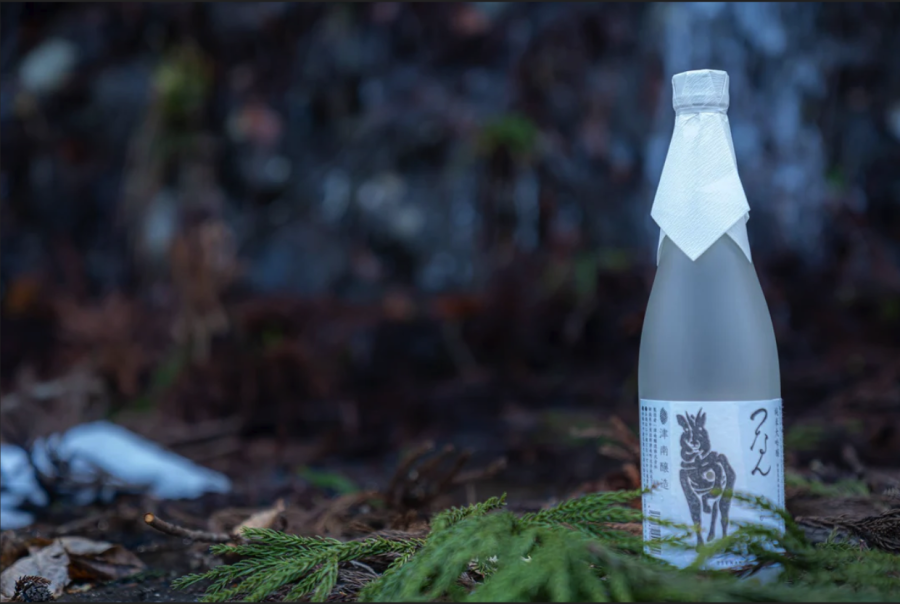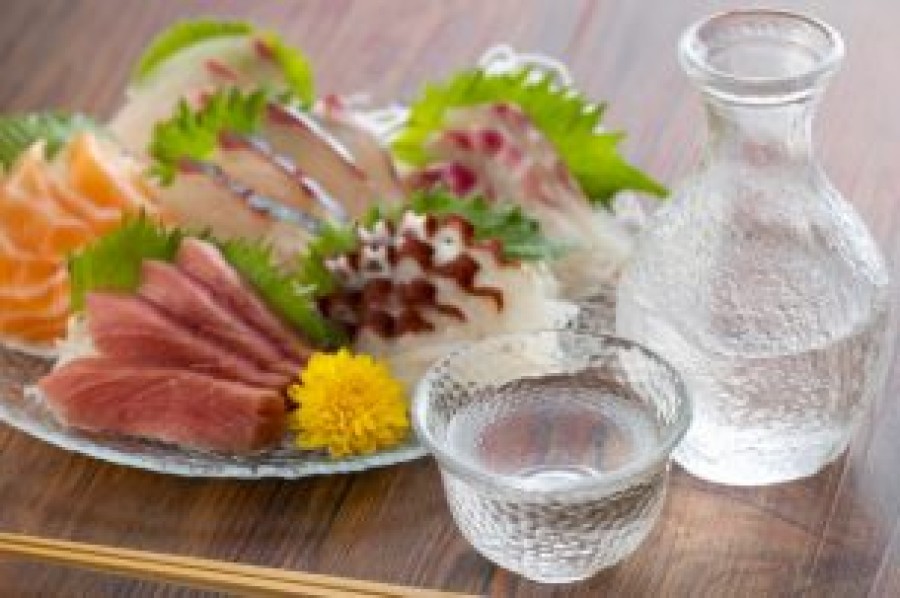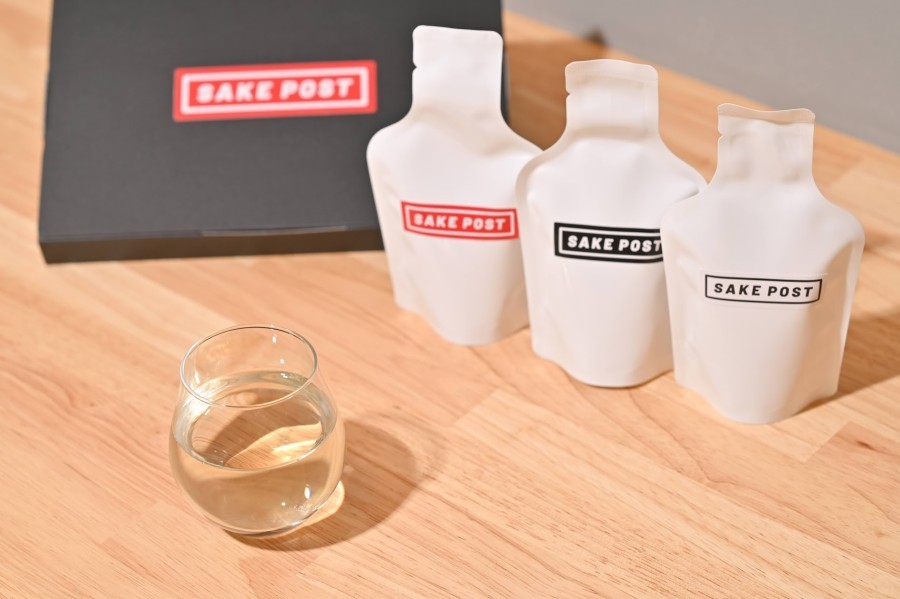COWBOY YAMAHAI and FISHERMAN SOKUJO, pictured here, are sake products for overseas export, produced by the Shiokawa Sake Brewery, Uchino-cho, Nishi-ku, Niigata City.
From the bottle's appearance, it is hard to imagine that it is even sake, but it is a sake that has been made in keeping with traditional sake making and has been thoroughly explored to match the flavours of Western meat dishes and rich dishes such as crab and prawns, respectively.
Kazuhiro Shiokawa, toji at Shiokawa Sake Brewery in Nishi Ward, Niigata City, developed this sake to go with Western food.
Born into a family of brewers, Shiokawa says he first became aware of brewing when he was in junior high school.
The microscopic world of the microscope. He says that he was most excited to see the micro-organisms living around him on a daily basis. Although his parents had asked him to take over the brewery, he felt that working in a brewery, where he could immerse himself in the world of micro-organisms that he loved, was his true vocation.
Ten years later. During his time at the research institute in Hiroshima, he came across Yamahai Kikuhime.
Until then, Yamahai sake had a stinky image for Shiokawa. Some breweries say it tastes more like putrefaction than fermentation.
Yamahai Kikuhime had a mellow aroma and a rich, drinkable quality without any odour. It tasted completely different from the gorgeous Junmai Daiginjo sake.
This Kikuhime was the catalyst for his aspiration to brew sake that harnesses the natural power of the bacteria.
Koji room at the Shiokawa Brewery
Koji waiting to enter the brewing tank
Sake-making techniques, Yamahai and Hayakoshi
There are two main techniques for making sake mothers, which form the basis of sake: kimoto and sokuso moto.
Nama-hashirozukuri was established around the Genroku era in the Edo period and is the most traditional sake brewing technique in existence. Water, steamed rice and koji are combined, and the lactic acid bacteria, nitrate-reducing bacteria and yeast that live in the brewery are allowed to grow naturally.
In the process, the rice is mashed with an oar stick, a process known as yamahoshi. As this process is extremely hard work, methods to omit the process were gradually explored, and in the Meiji era (1868-1912), a method was established that did not involve the wholesale process, known as 'Yamahai Hashiwaku'. This is known as Yamahai.
On the other hand, the fast brewing method is a technique in which lactic acid bacteria are artificially added in advance to prevent other bacteria from growing. Most of today's sake brewing is done using this technique.
Mr Shiokawa says that this does not mean that the sake is good because it is Yamahai, or that it is fast brewing and therefore not elaborate.
'Make it with a technique that fits the concept you're trying to put forward.' That's all there is to it. The fruity-tasting sake popular with women can only be perfected by a fast brewer."
Shiokawa Brewery's Yamahai brewing process
Mr Shiokawa became the brewery's toji in 2003 and started working on yamahai brewing two years later, in 2005.
Water, koji and rice are combined and the temperature is initially kept constant to allow the nitrate-reducing bacteria to fully develop.
The temperature is then raised slightly to create an environment in which the lactic acid bacteria can grow easily. Bacteria are very sensitive to temperature, and once they are grown at a temperature at which they can grow easily, they will not be invaded by other bacteria.
This exquisite temperature control, which does not allow the growth of other bacteria, brings a mellow aroma and rich flavour.
The first year, the company sold a Yamahai Junmai Daiginjo of the Shiokawa Shuzo's signature product, Echi-no-Seki. This was so well received that it was improved the following year, and four years later, in 2009, the Yamahai-brewed 'Negaibito' went on sale. This sake recalls the 18 people who were active in the excavation of the Shinkawa River during the Edo period.
Every sake made by Mr Shiokawa has a story behind it.
After deciding on the concept, they decide what kind of sake rice to use and what brewing method to use.
On this day in early April when we visited Shiokawa Shuzo, freshly pressed COWBOY YAMAHAI and FISHERMAN SOKUJO were poured into the tanks here. After a few months in the tanks, the slightly fizzy, gorgeous flavour changes to a deeper, more subdued taste.
What is world-class sake?
Today, sake is not widely consumed among young people. The Japanese sake market is shrinking year by year.
What about wine, the same brewed liquor? France exports more and more each year, with wine accounting for 99.5% of the world's brewed liquor share, while sake accounts for less than 0.5%.
'In Japan, breweries are closing up shop. Here in Uchino, until recently there were four breweries. But now it's just us and Higi Shuzo of Tsuru no Tomo. A small brewery like ours can never win a price war with the big breweries. So what should we do? The result of our thinking was to export overseas."
Mr Shiokawa said.
However, at first they did not sell at all.
When shipped overseas, the price more than doubles. It is difficult for the average person to afford, and wealthy people abroad may pay a million yen for vintage wine, but sake costing less than 10,000 yen is not an option.
Major breweries already distribute inexpensive sake produced at local factories to Japanese restaurants abroad, and they cannot compete there.
What then?
This is why Mr Shiokawa turned to steak houses, which have far more outlets than Japanese restaurants.
Some steakhouses already include sake. However, the combination of wine with steak is so popular that only Japanese living abroad are willing to try sake.
What if you could arrange the bottles with the same aspect as wine...?
COWBOY YAMAHAI was then changed to a more acidic quality to match meat dishes, and the bottle was designed to look like a wine.
Then they would find 'COWBOY YAMAHAI' alongside the wines and say, "I've never seen that before, shall I try some?" and so on, and they began to choose it.
Every year, more and more countries export COWBOY YAMAHAI and FISHERMAN SOKUJO.
First time on show! Red Sake
This year, the company tried a new approach. They thought that 'health-oriented' would be the keyword to compete with wine, so they developed a sake with polyphenols.
Sake brewed using ancient rice.
The photography was poor and the key parts were blurred, but the sake was so red that it could be described as red wine.
The taste is not unlike that of sake.
Easy to drink, fruity but distinctly different from the fruity taste of FISHERMAN SOKUJO, with a crisp but mellow aroma.
We also tasted this sake lees, which is also completely different and healthy tasting.
Brewed for overseas consumption to combat red wine, this red sake is sure to be a hit with the girls, and will be available in a limited edition of around 500 bottles, so if you see it, buy it immediately.
From June to mid-September, when the brewing process is settled, the brewery is open for tours if contacted.
Why not taste Shiokawa's sake while experiencing the story of each sake?
- Shiokawa Brewing Company: http://www.shiokawa.biz/
advertisement


